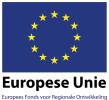Following an intensive development and test phase, QuakeShield – an innovative product by Oosterhof Holman and SealteQ to make buildings earthquake-proof – is ready to be applied in practice. A pre-war property in Usquert was the first to be fitted with QuakeShield. An unsafe outer wall of this property in the municipality of Eemsmond was made earthquake-proof. Because the property is fully reinforced, the work was carried out from the inside. After the wall had been reinforced it was insulated. The pictures show that the wall is in a bad condition; demolition and reconstruction are generally the only option in such situations. The development of QuakeShield ensures that walls can be reinforced to the extent where this option is no longer necessary.
Watch the YouTube video of the property in Usquert which was reinforced with QuakeShield
The assignment was received via the construction company De Boer from Groningen. In his capacity of chairman of the Groningen department of the Dutch Construction and Infrastructure Federation, managing director Klaas de Boer was present during the innovation visit by Dutch Construction and Infrastructure Federation some time ago, where the delegation, accompanied by chairman Maxime Verhagen, was updated on energy-neutral and quakeproof innovations in the province of Groningen. This also put them in touch with Oosterhof Holman in Grijpskerk, who displayed several innovations in the field of earthquake resistance, including QuakeShield. “I have known Martin van der Leest from SealteQ for years, and therefore I was aware of the developments regarding QuakeShield”, says De Boer. “We have also developed an innovative system for the reinforcement of pre-war properties. This earned us an award in this category from the Dutch Petroleum Company (NAM) because it is practical and can be applied by almost any building expert.” Walls, floors and roof structures are connected and reinforced with stainless steel anchor work, non-deformable disc constructions and triangular connections. The company has also developed a method to replace authentic chimneys or to make them earthquake-proof while preserving their old character.
Shared enthusiasm about QuakeShield is confirmed
The property in Usquert, dating from approximately 1900, is one of the buildings that was being reinforced by the construction company De Boer. “Until we came across a wall where the stones were stacked loose on top of each other as it were”, explains De Boer. “In order to create more cohesion in the wall, it seemed ideal to us to apply QuakeShield. Together with Martin, I submitted specifications to the Centre for Safe Living, asking if this could serve as a pilot project. They responded enthusiastically: we received a ‘go’.” But what were De Boer’s exact considerations in terms of opting for QuakeShield? De Boer: “With QuakeShield, you can reinforce weak walls without leaving any trace – a great advantage – and you facilitate the connection with floors and roof structures. It is mainly useful when the brickwork lacks proper cohesion. We became enthusiastic about QuakeShield during the meeting at Oosterhof Holman, and this impression was confirmed with the application in Usquert.”
Watch the YouTube video of the property in Usquert which was reinforced with QuakeShield
Why QuakeShield?
QuakeShield is a unique system developed by Oosterhof Holman and SealteQ and used to make properties earthquake-proof beforehand and after the fact. Gas extraction has resulted in a great many earthquakes in land at Groningen in recent years. These induced quakes (as a result of gas extraction) have caused a great deal of damage to properties. This has created a feeling of insecurity among residents. It is therefore pure necessity to reinforce these properties and make them earthquake-proof – but it is not an easy task. This was a reason for Oosterhof and SealteQ – both from Groningen – to join forces. At their own initiative and expense, they developed QuakeShield for the specific situation in Groningen, with academic support from TU Delft and TU Eindhoven.
The technology
QuakeShield consists of lightweight carbon composite strips (eight times stronger than steel), which are applied with a specially developed tough elastic adhesive in pre-drilled grooves in the wall. Subsequently, carbon mesh reinforcement is applied on one side. Finally, this is finished with a fibreglass-reinforced cementitious or polymer reinforcement layer. The system is able to reinforce both sides of the brickwork – by deep and shallow insertion of reinforcement from one side – and can be applied both from the inside and outside of a wall. This means that the property will stay habitable in periods during which reinforcement work takes place. In addition, historical buildings can be reinforced from the inside so that the unique look of the building remains intact. The solution amply meets the current standard for quakeproof new buildings (Dutch abbreviation: NPR).
Also made possible by
This project is also made possible by the partnership between the Northern Netherlands, Koers Noord and the province of Groningen, based on the innovative action programme Groningen-4. Moreover, QuakeShield has received financial support from the innovation regulation for new buildings of NAM.

